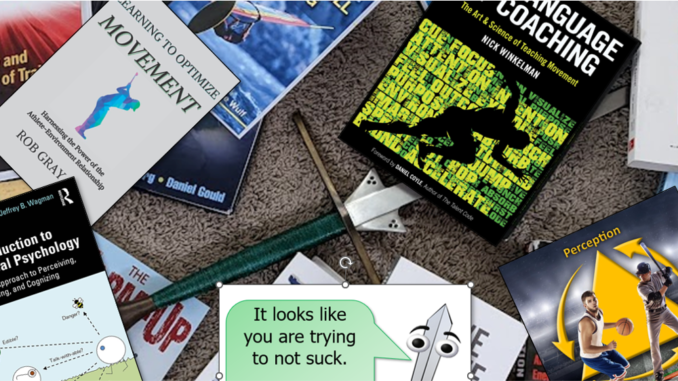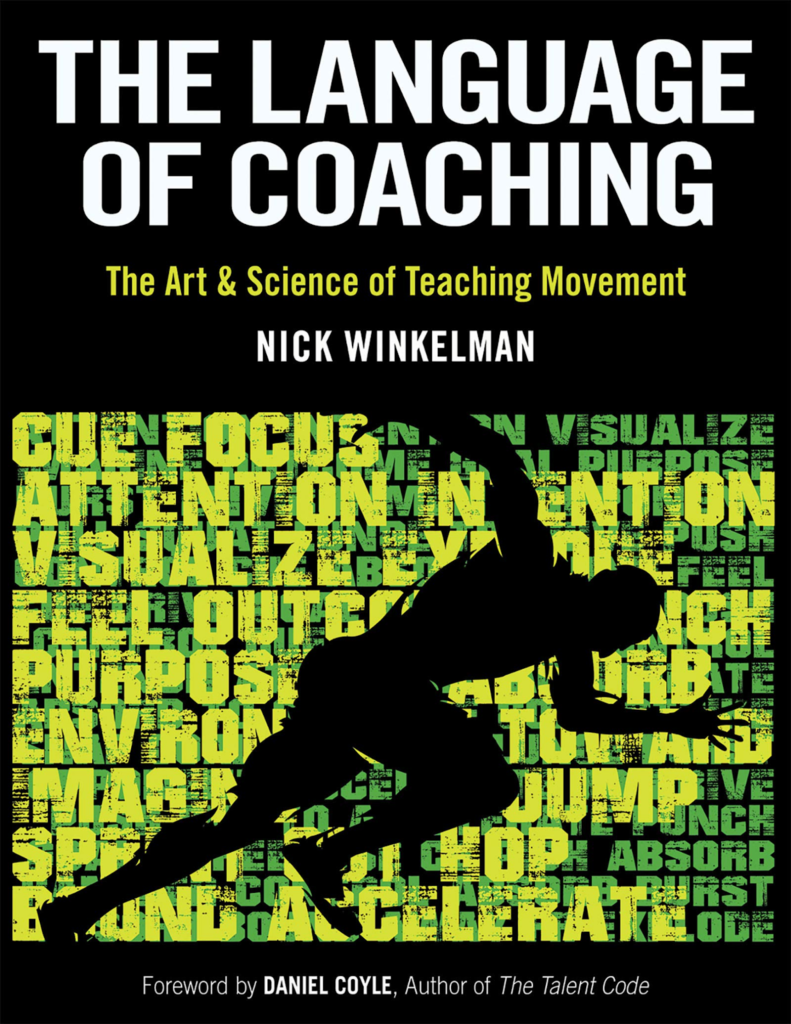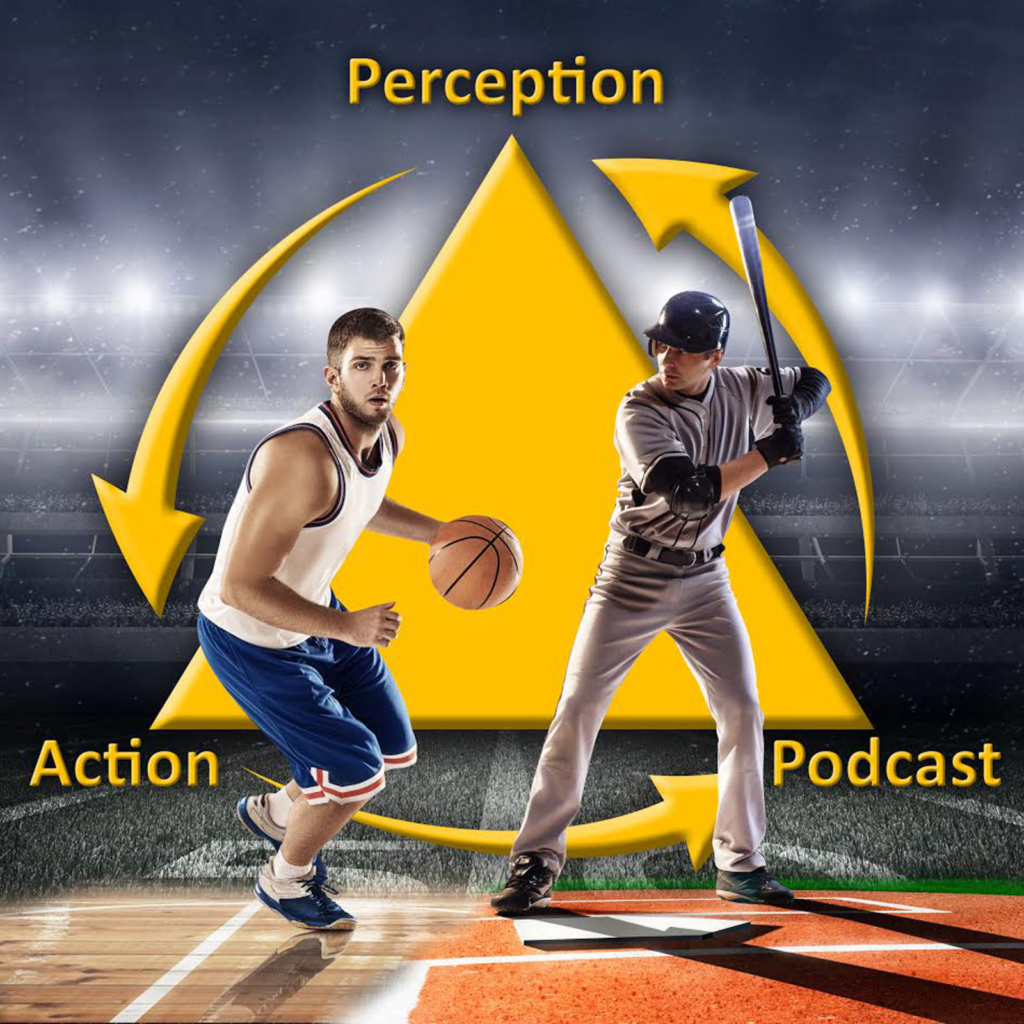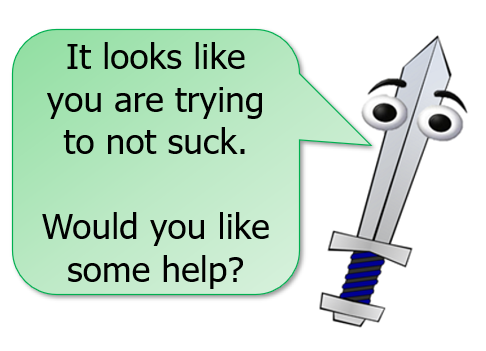
This is a BIG topic that I’ve been wanting to write about for a while now. It’s a dive into what exactly Ecological Psychology is, and how it has any relevance to us as HEMA practitioners and coaches. I’ve been one of the authors contributing to Game Design 4 HEMA (gd4h.org) since its inception, and there are a ton of resources there on how to use training games for HEMA. This is all underpinned by the science of Ecological Psychology, something which is a radical departure from conventional theory but would also sound pretty obvious and unimpressive if you hadn’t learned the more traditional way first. So let’s dive in.
In general there are two (groups of) theories for human motor learning and control, IPA and EA,

IPA stands for “Information Processing Approach”, and is probably pretty close to how you imagine motor control working. Get information, process information, decide on action. Though IPA tends to be the name given to this way of understanding by the people interested in EA, most people who look at things this way aren’t aware there is even another way to think of learning. (Which is why another term is “Traditional Approaches”.)
EA stands for “Ecological Approach” and is a little more of a holistic model. Instead of the brain acting like a computer, and making a full model of the situation from inputs, there are ‘control laws’ which map inputs directly to outputs. Muscle activations are not planned ahead of time, but are instead dynamically created for each individual circumstance.
The Contents
This might be leaving you more confused than you were after just seeing the picture. And it’s, unfortunately, not something that is easily explainable. Fortunately, I love writing about this and will be releasing a series of articles on the topic:
- Part 1: Ecological Psychology (you are here)
- Part 2: Motor Solutions
- Part 3: Affordances
- Part 4: Direct Perception
- Part 5: Perception-Action Coupling
- Part 6: Control Laws
- Part 7: Implications of EA
The Resources

I’m not going to be peppering my articles with a ton of paper citations, and instead I will give a collection of reference materials and recommendations here. For two important reasons:
- I don’t really consider a single study as a good ‘proof’ of anything. Knowledge advances by a whole community of scientists investigating an issue and challenging/replicating each other’s results. So while attaching a reference to every point I want to make may seem more credible, having a single study to back up a point is kind of garbage. Claims need to be backed up by a broad base of supporting work, and you don’t get that from a single citation. The best I can do is give people the material that gives summarizations of current research.
- That is a ton of work and I know, like, one person would actually follow up on the studies cited.
So, with that bitching out of the way, onto the list of resources. Which, if you go out and start reading now, will end up being spoilers for the rest of my articles (I guess?).
Learning To Optimize Movement: Harnessing the Power of the Athlete-Environment Relationship
Rob Gray

This is actually Gray’s second book, after his How We Learn To Move. While the book is intended to follow up and expand on the first, I think it makes a clearer and more direct picture if you start here. This will probably hit almost everything I’m summarizing in these short articles in more detail, and have a big list of studies to parse.
The Language of Coaching: The Art & Science of Teaching Movement;
Nick Winkelman

The Language of Coaching is not specifically an Ecological Psychology book, but I list it because it’s one of the most directly applicable books that takes a topic like External Cues and writes it from a “I’m a coach and how do I coach better” point of view rather than “I’m interested in learning more about science, so I can figure out how to use it to coach better”. Winkleman isn’t a scientist; he is a coach who is explaining best practices that are backed by scientific rigor.
Perception In Action Podcast
Rob Gray

If you aren’t into reading as much as listening (in which case how did you make it this far?) the above-mentioned Rob Gray also has a podcast which covers all the similar topics. Though at 400+ episodes it’s pretty daunting to ‘see’ it all. The more recent content trends more towards interviews about coaches’ experiences with EA teaching methods, and the backlog has summaries of the concepts at play and paper reviews of relevant publications. Good starting points are:
- The Two Skill Acquisition Approaches: Key Differences
- Key Principles of the Ecological Approach to Skill
Introduction to Ecological Psychology: A Lawful Approach to Perceiving, Acting, and Cognizing
Julia J.C. Blau & Jeffrey B. Wagman

This is, technically, a textbook. But if that didn’t scare you away, I have to say that it is one of the few textbooks that can actually be an enjoyable read for someone that isn’t being forced into it. The book is written more like the authors are trying to directly tell a (very technically detailed) story to you in a way you can understand and appreciate. So while it isn’t for everyone, if you’ve looked at the above and thought “wow, this is cool and I want to know more”, this is the book for you.
Game Design 4 HEMA

I mention GD4H at the start, and I’m going to reiterate it. If you’re reading through these articles and thinking “this is cool, but I’m not sure how I would use it”, that is the place to go. A good starting point is Stephen Cheney’s Ecological Approach Primer. But of course the best resource of all is to continue on to Part 2: Motor Solutions.

